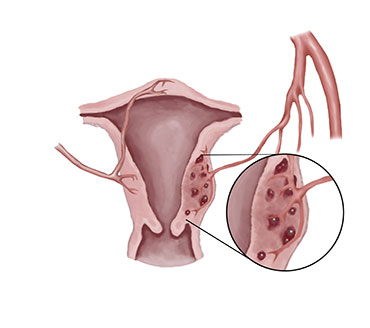
According to latest research, about seventy per cent women suffer from fibroids, where non-cancerous tumours of varying size develop in and around female reproductive system, also known as uterus. Even though practitioners were unfortunately not able to pinpoint any definite cause, they did say an increase in oestrogen production could be held responsible. Common symptoms include heavy menstrual bleeding accompanied by abdominal cramps, frequent urination, constipation, backache, discomfort during sexual intercourse, etc. Now let us explore most popular treatment for this particular gynaecological disorder- uterine fibroid embolisation (UFE).
Steps
Benefits
Reactions
Risks are negligible but still being aware of few minor reactions help. Women can experience mild pelvic pressure, a high temperature, occasional discharges, and nausea. Post embolisation syndrome, which entails flu like signs, is also common. Seek assistance if things seem to exacerbate.
Aftercare
From above discussion, we can fairly conclude why exactly uterine fibroid embolisation (UFE) impressed larger segments of population. It successfully replaced other procedures available such as hysterectomy, myomectomy, endometrial ablation, myolysis, etc. Some women also rely upon home remedies, which call for utmost patience. They exercise, indulge in warm baths, consume green tea, adhere to a strict balanced diet under all circumstances, avoid exposure to varied environmental toxins, reduce caffeine intake, and many more.